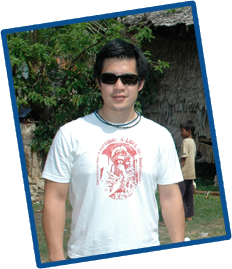VisionFund does not measure the value of its work only financially. It considers
social indicators in the communities it serves to be as important as indicators
of financial performance.
While all businesses and organisations have a conventional ‘bottom line’ to measure
their financial performance, VisionFund seeks a second ‘bottom line’, measuring
performance in terms of positive social impact. These twin measures – social transformation
and financial results – are mutually reinforcing in the long run.
A donation provides the necessary funding for micro loans that will be leveraged
and recycled to lift family after family out of poverty, eventually having many
times the impact of the original donation. Microenterprise then acts as an economic
engine increasing family incomes and creating enough jobs so that the community
can permanently sustain developmental improvements. Loans to impoverished female
entrepreneurs provide greater benefit for families, because women typically invest
more of their increased income in their children’s nutritional, health, and educational
needs.
Children’s well-being greatly improves when parents access microloans. A World Vision
research study found that "more children and youth are now enrolled in school, are
attending school regularly, and performing better academically than before their
families had access to credit."

Click here to view the Economic Ladder
VisionFund conducts "Progress out of Poverty" index surveys to ensure they are reaching
borrowers with the most appropriate financial products according to their needs
identified in the economic ladder.
The economic ladder communicates how various interventions ranging from relief efforts
to formal banking are used to progress individuals out of poverty.

To assess the impact of development efforts in the field, World Vision developed the Child Well-Being Outcomes (CWBO). These outcomes (including health, education, protection, spiritual well-being, and safety) are used to focus our work on the well-being amongst children within World Vision area development programmes.
Because of evidence connecting increased household income with children going to
school, VisionFund has decided to focus on education. All MFIs are being asked to
report against one standard indicator, which is the proportion of MFI’s clients’
children enrolled in and attending school. By measuring this indicator, VisionFund
will be able to know how increased family income is directly impacting the level
and quality of education the children of clients are receiving.
"There is no doubt in my mind that microfinance facilitates entrepreneurialism in
its purest form and releases a multiplier effect of social and economic benefits."
Kevin Chin
Managing Director, Arowana Capital, Australia
Donor

